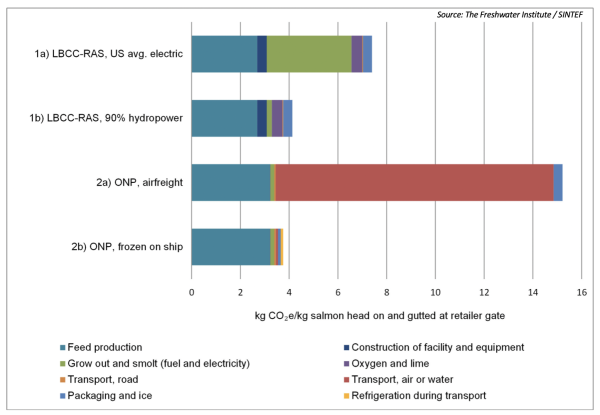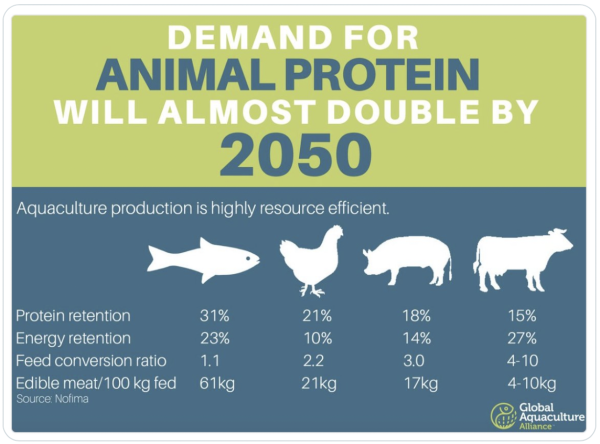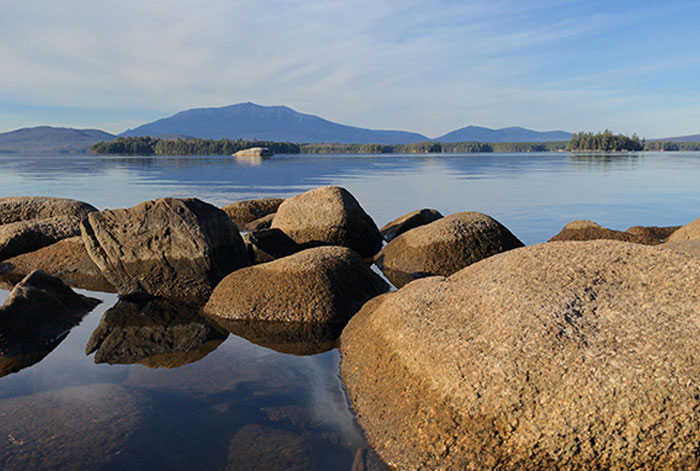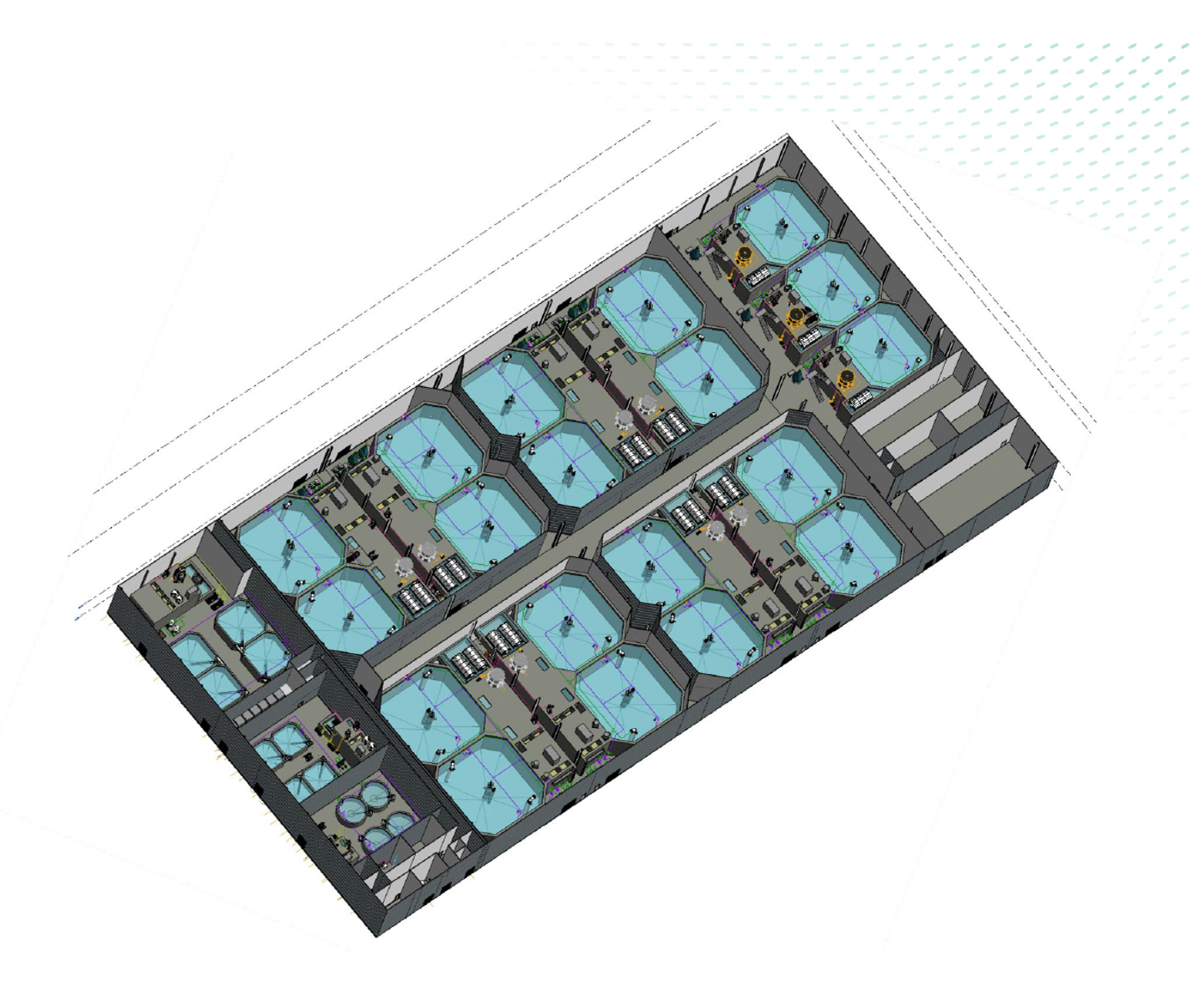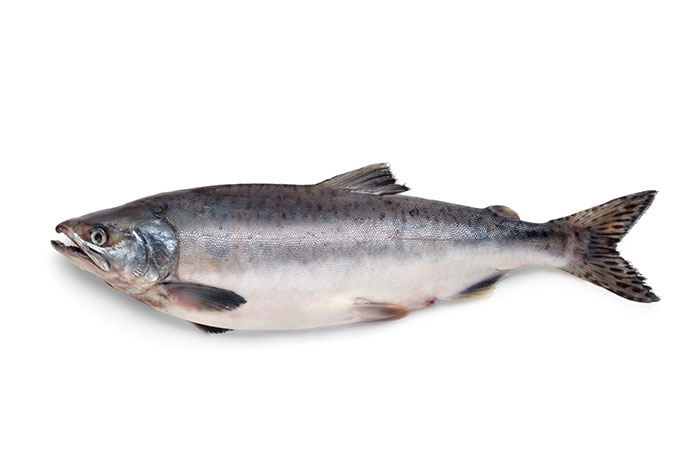Technology
Katahdin Salmon is a frontrunner in low CO2 footprint (life cycle CO2 emissions Kg CO2/kg product).
CO2 – Approximately 4 kilograms of CO2 per kilo product compared to 14 + kilograms of CO2 for net pen imports and up to 60 kilograms of CO2 for domestic red meat. Carbon-free power, avoidance of airfreight, fishmeal-free fish feed, and local/regional market are the most important factors reducing CO2 emissions in the Katahdin Salmon case. No other 100% renewable power case exists.
1:1.1 feed conversion ratio (FCR) in RAS – the feed factor for salmon is more efficient than any other animal protein we buy in the store. In 2023, the first feed without fish meal will be commercially available at volumes and will be the target feed for Katahdin Salmon.
Climate change resilient – with temperature control, water quality control in a contained system, and limited water use, Katahdin Salmon is climate change resilient.
Recycling waste resources – nutrients and solids are captured and processed into value-added products including protein powder, natural gas, and lobster bait.

